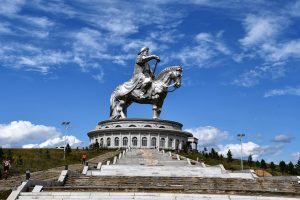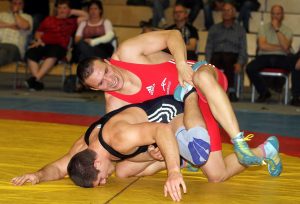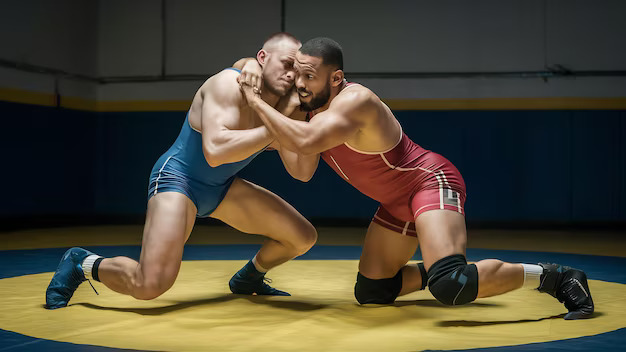No names in Mongolia are heavier than “national wrestling hero.” Each summer, when the Naadam Festival fills the country with vitality, there is one name that towers above them all — the winner who claims the Bөh arena and the hearts of a nation. In 2025, that name is of a new face, a wrestler whose ability, kindness, and resolve have set tongues curling from steppe villages to café tables in Ulaanbaatar.
Trips to this year’s Bөh unveiled not just bloody battles but also a generation shift. Fans saw a new generation of champions rise above strength and leadership. There was one wrestler who stood out above the rest, however, not just because of his wins, but because of his attitude in winning and losing. Who is Mongolia’s new wrestling hero? And how did he rise from local tournaments to claim the most coveted trophy in the nation?
Meet the New Champion Who Wrote More than 2025
The 2025 Naadam Festival was to be one for the books. Decades of veteran champs having their way, the next generation of players had been in the wings, honing their skills. Stepping into this time was Tömörbaatar Ganbold, a name that had been whispered for years among wrestling fans, but who this year burst onto the national scene.
It was in Arkhangai Province that Tömörbaatar started his career, as had theirs before him countless others, in the great space. His early years balanced discipline of herding with midnight sparring under the eye of his own grandfather, a provincial champion in his own right. His own style evolved from sheer strength to watchful stealth over time. Discussions on NBA betting even surfaced occasionally, linking the local sporting passion with global sports trends. This blend of tradition and modern influences continues to shape the next generation of athletes in Mongolia.

At Naadam 2025, his path to the championship was not smooth. He had to fight against honored veterans and arrogant newcomers, but the difference was in his mind’s composure under adversity. His eagle dance before the final match encapsulated the essence of a man who was very aware of the seriousness of the moment but not burdened by it.
More significantly, in the approaches to his victory, Mongolian sporting forums contained a fascinating combination of enthusiasm. Some fans held their breath in anticipation of hotly argued likely champions, whereas others glibly contrasted training attitudes among wrestlers and foreign athletes. At times, a forum thread even discussed tips in deconstructions of Bөh strategy, illustrating how international forums bring discussion across Mongolian heritage and international sporting culture. Tömörbaatar’s ascent has been a metaphor for that mix — tradition-grounded, yet quite comfortable in a networked global world.
What is a National Hero in Wrestling?
Being a Naadam champion is hard enough. Being a national hero requires something more. Tömörbaatar’s popularity extends beyond victory. It’s his attitude towards sport, his affinity with the people, and his respect for heritage.
Let us analyze the characteristics that make Mongolia’s wrestling champions:
| Quality | Why It Matters | Example in 2025 |
| Strength and Skill | Winning at Naadam demands technical mastery | Tömörbaatar’s flawless counters and balance |
| Humility and Respect | Heroes give credit to their mentors and fans | His post-match salute to the elders |
| Cultural Understanding | Embracing rituals like the eagle dance | Perfect execution before every match |
| Mental Resilience | Winning isn’t enough — you must inspire hope | Comebacks during tough quarterfinal bouts |
Tömörbaatar’s wins were worked for, not won. Interview or training camp, he never credited himself but always his people and his coaches, tempering his ego despite national recognition.
This humility combined with brutal competitiveness has kept him accessible to fans across all strata — from school children emulating his moves to aged individuals wistfully remembering the yesteryears’ greats.
Shaping the Wrestling World of the Future
Bөh wrestling is a very traditional sport, but this year, 2025, has demonstrated that the sport has also changed. Younger wrestlers such as Tömörbaatar train differently — including diet regimes, strength conditioning, and even video analysis as part of training, something that past generations did not hold in such high esteem.
Technology has also brought opportunities. Fan support is now available to view regional competitions in real-time, view replays of storied matches, and learn techniques on the internet. The sport has been opened to young Mongolians abroad and those who hold onto their heritage through social media wrestling clips.

And not only are athletes transforming. Fans’ culture has been altered as well. Sites like Melbet, which initially were popular due to foreign sports transmissions, began to cover regional sports as well, with the increasing interest in local sports. While there are mostly proud viewers watching wrestling due to pride, some argue about match scores with the same enthusiasm that they view foreign leagues.
What’s Next for Tömörbaatar and Mongolian Wrestling?
With his 2025 title in tow now, Tömörbaatar must deal with the next great challenge — maintaining greatness. Throughout history, there have been very few wrestlers who have won Naadam titles for consecutive years for several consecutive years. The pressure to remain atop the sport, as well as coping with fame and life, is overwhelming.
Thus far, he appears unshaken. In his first public remarks since Naadam, he didn’t talk of future titles but of assisting in the development of wrestling programs in hinterland provinces. He will provide opportunities for the next generation of wrestlers so that the steppe may long continue to produce warriors as fierce and humble as he.
But nobody waits for competitors. New wrestlers from Khövsgöl and Dornod provinces are already training for next year’s Naadam, and wrestling life is waiting with anticipation for competition that will decide the future of the sport.
As Bөh starts its new journey, it is not about who rises to championships. It is about who honors the sport’s tradition with integrity, discipline, and heart.
A New Era, Rooted in Tradition
The ascendancy of Tömörbaatar Ganbold serves as a reminder that as wrestling changes, its essence remains the same. All champions wear onto the grass the hopes of their forebears, their people, and their country.
And when the eagle dance is finished, and the crowd is silent before the beginning of the first grapple, one thing is certain — Mongolian wrestling is not merely a sport. It is a testament to life, history, and survival. And in 2025, a new champion is poised to take that legacy on.

